Web3 Dev Huddle Panel 1 Recap: The Great Debate: To EVM or not to EVM
On November 14, 2024, HackQuest and Gate Ventures, alongside Open Campus and KIP Protocol, hosted the second Web3 Dev Huddle: Gateway to Web3 at Gaysorn Tower, Bangkok. This panel brought together leading DevRel professionals and builders to discuss how Developer Relations (DevRel) is evolving in the Web3 space. Panelists included Lei Yang (Co-founder and CTO at MegaETH), Nikolay Volf (Founder and CEO of Gear), John Lilic (CEO at Telos), Ash (CTO at XION), Francesco Andreoli (Head of DevRel at ConsenSys), and Mark Veer (Head of BD at Mantle). Read on for key insights from this panel.
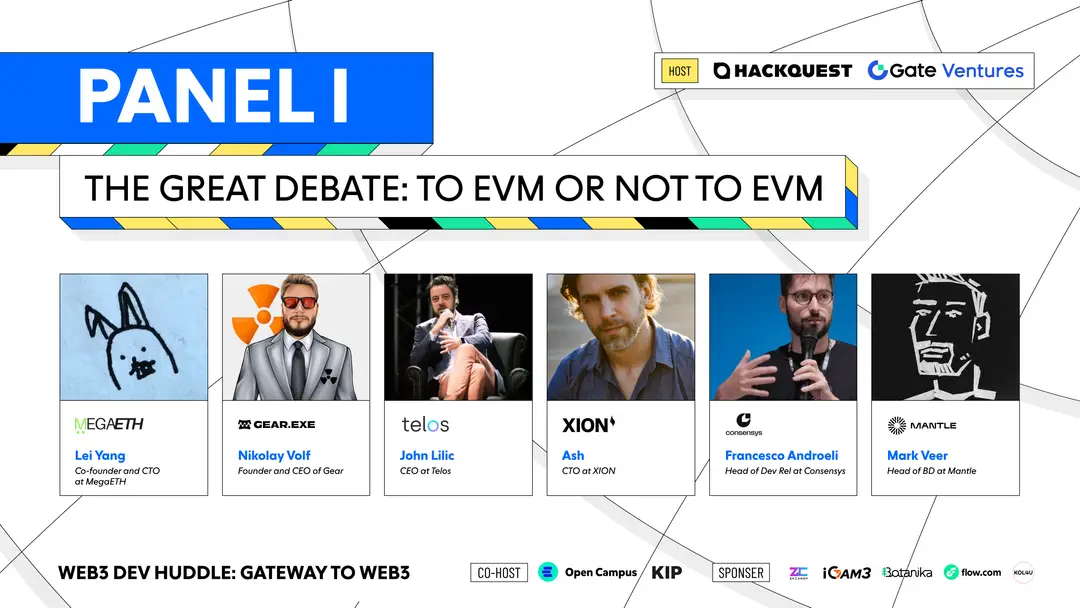
Key Takeaways
Balancing Programmability and Performance
Panelists reflected on the EVM’s trade-offs, noting its security and programmability strengths but pointing out its inherent performance limitations.
Lei Yang emphasized that the EVM was not designed with performance optimization in mind, stating, “The main trade-off is programmability versus performance. While EVM prioritizes programmability and security, it limits the ability to implement parallel processing and caching.”
Ash highlighted how legacy design decisions impacted optimization: “The EVM’s architecture makes it challenging for high-level parallel programming, which limits its scalability and hinders more complex use cases.”
John Lilic, however, called attention to the historical context of EVM’s design: “At Ethereum’s inception, the constraints on time and resources forced a focus on mass adoption over robust system design. It’s legacy software that grew beyond its original scope.”
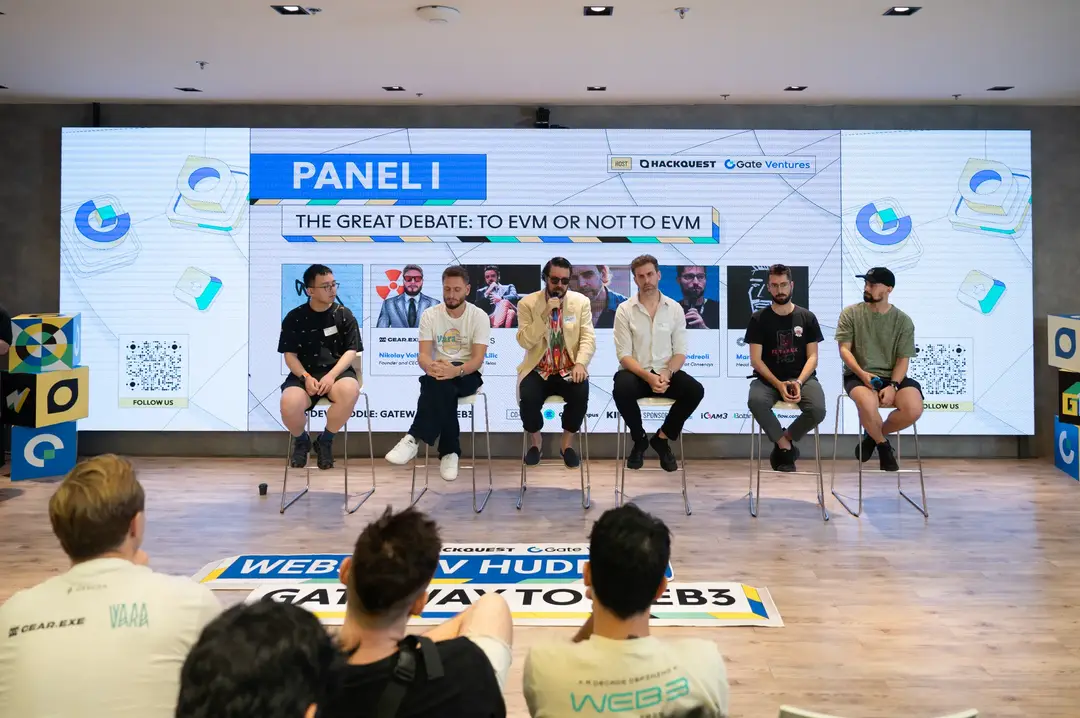
Trade-offs and Innovation in Blockchain Design
The panel explored the tension between leveraging the EVM’s ecosystem and breaking free to innovate beyond its limitations.
John Lilic offered a “spicy take,” suggesting the industry reevaluate assumptions: “Ethereum’s move to proof-of-stake has unintended trade-offs, such as creating what I call a ‘sh**box stack,’ prone to inefficiencies and risks. We must explore hybrid consensus models, blending proof-of-stake with proof-of-work, to harden the ecosystem.”
Francesco Andreoli underscored the value of accessibility and collaboration: “We need less developer fragmentation. Tools should be accessible, enabling collaboration across chains. It’s not just about tech—it’s about ecosystems and building bridges for developers.”
Nikolay Volf emphasized the importance of integrating new languages and tools to improve usability and innovation across platforms. “To truly move forward, we must compose platforms with modern languages and frameworks that empower developers and users alike.”
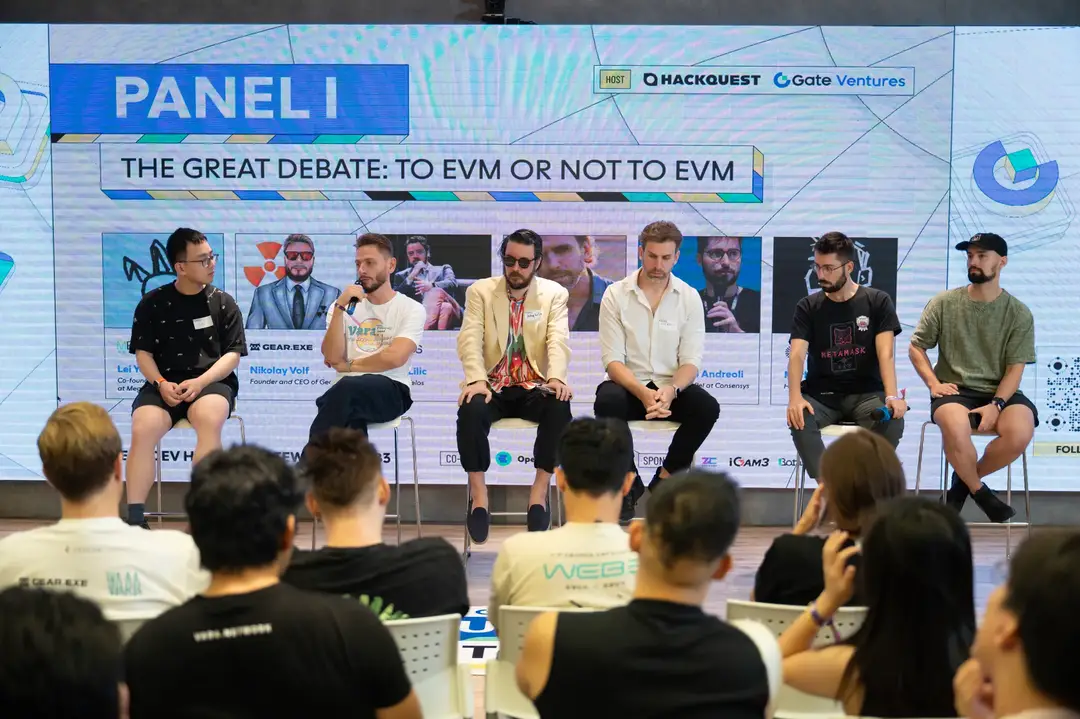
Developer Fragmentation and Cross-Chain Tooling
Cross-chain tooling and reducing developer silos were central to the discussion on the future of blockchain development.
Mark Veer emphasized the importance of developer support: “Developers need accessible frameworks and clear pathways to build cross-chain applications. Without that foundation, we risk stalling innovation at the application layer.”
Ash pointed out the challenges of onboarding developers from outside the blockchain space, stating, “Making Solidity the entry point to blockchain turns away 99% of developers. We need tools that are inclusive and intuitive.”
Lei Yang proposed focusing on scalable programming languages: “For blockchain to truly scale, we need to integrate modern programming languages like Rust that enable parallelism and are better suited for high-performance applications.”
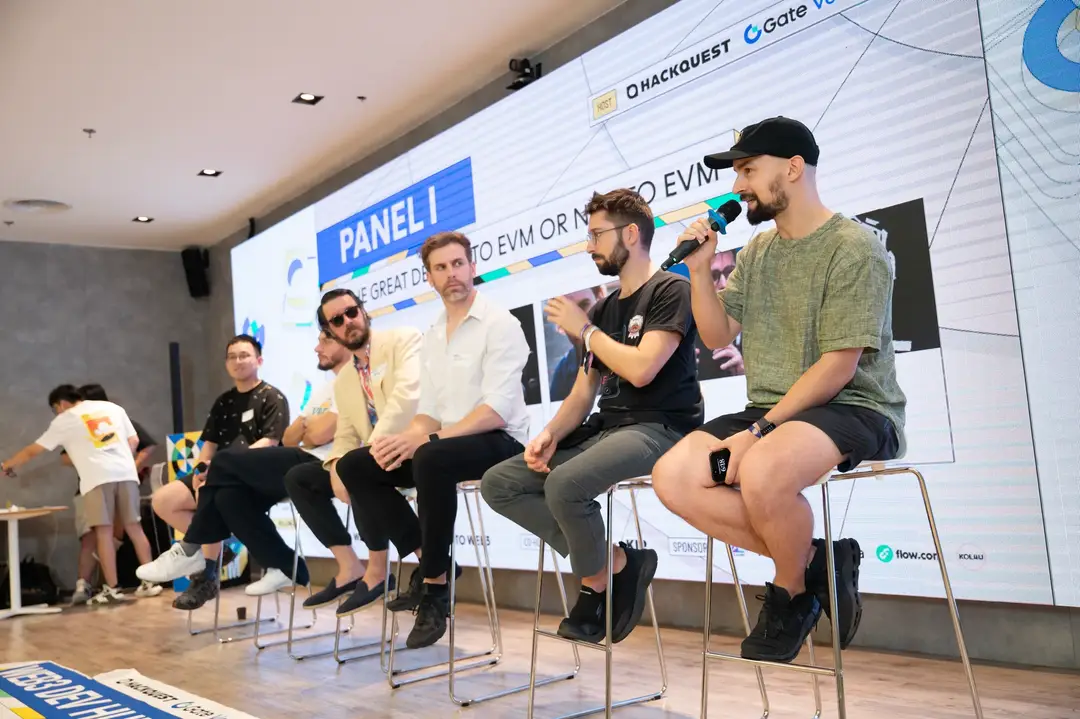
Closing Thoughts
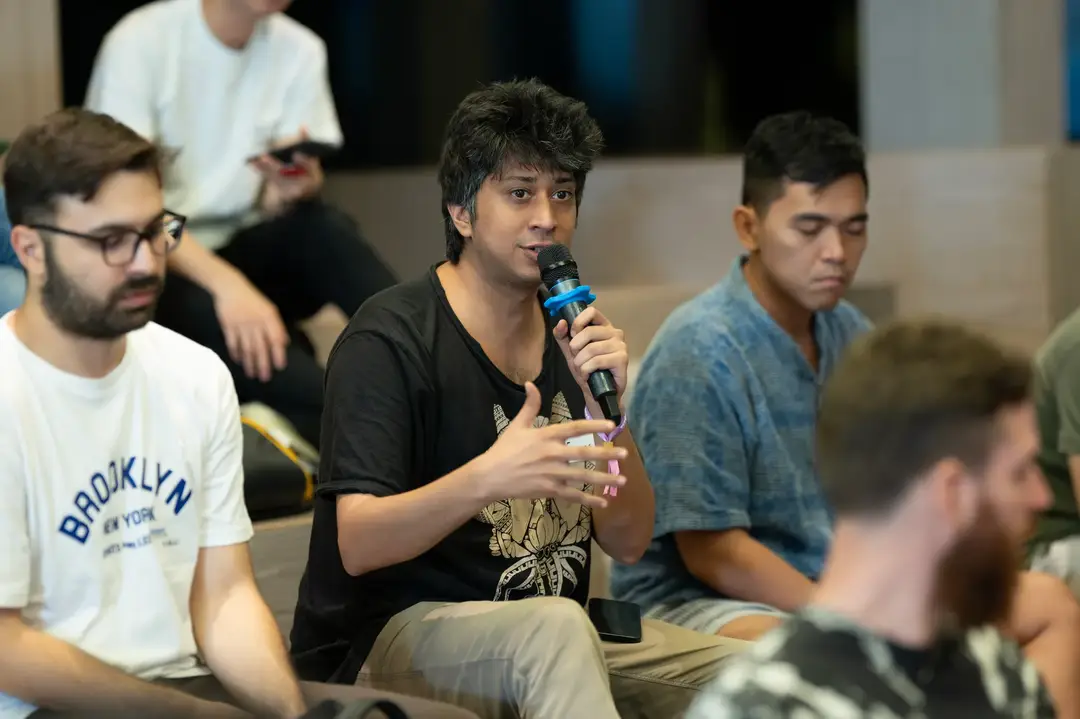
Panel I of the Web3 Dev Huddle provided a platform for a robust exchange of ideas on the EVM’s future and alternatives. The discussion highlighted the need for blockchain systems that balance performance, accessibility, and security while reducing developer fragmentation. As John Lilic put it, “The future lies in creating ecosystems that are not just technically advanced but also welcoming and collaborative.”